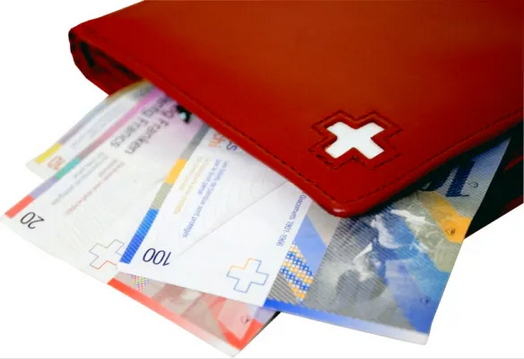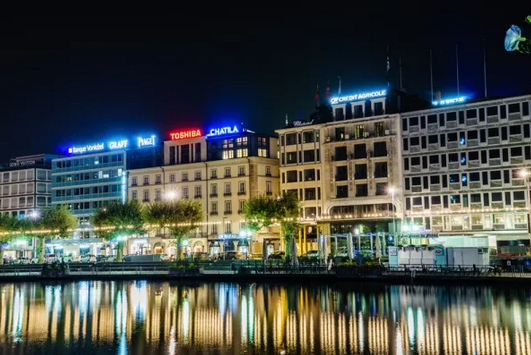As the prices of fossil fuels skyrocket and further supply and price uncertainty looms, many are seeking ways to cut the amount they spend on home energy. A publication by the Swiss Federal Office of Energy (SFOE) shows where savings can be made. Photo by Eva Penner Martens on Pexels.comRecent rises in the prices of fossil fuels highlight the paradox at the heart of efforts to reduce climate change. As environmentalists we want the world to burn less wood, coal, gas and oil. However, as consumers many of us want more cheap fuel to burn directly ourselves or by the companies that produce the electricity we consume. Around 40% of the electricity entering Europe’s synchronous grid was produced by burning fossil fuels in 2018, according to ENTSO-E, an association of
Topics:
Investec considers the following as important: 3.) Personal Finance, 3) Swiss Markets and News, Cost of living Switzerland, Editor's Choice, environment, Featured, newsletter, Personal finance
This could be interesting, too:
Investec writes The global brands artificially inflating their prices on Swiss versions of their websites
Investec writes Swiss car insurance premiums going up in 2025
Investec writes The Swiss houses that must be demolished
Investec writes Swiss rent cuts possible following fall in reference rate
As the prices of fossil fuels skyrocket and further supply and price uncertainty looms, many are seeking ways to cut the amount they spend on home energy. A publication by the Swiss Federal Office of Energy (SFOE) shows where savings can be made.
Recent rises in the prices of fossil fuels highlight the paradox at the heart of efforts to reduce climate change. As environmentalists we want the world to burn less wood, coal, gas and oil. However, as consumers many of us want more cheap fuel to burn directly ourselves or by the companies that produce the electricity we consume.
Around 40% of the electricity entering Europe’s synchronous grid was produced by burning fossil fuels in 2018, according to ENTSO-E, an association of European electricity transmission system operators. Switzerland is connected to this grid, exporting and importing significant quantities of electricity to and from it.
Some would argue, with fossil fuels at high prices, now is the perfect time to find ways to use less energy, nearly all of which is associated directly or indirectly with pumping more CO2 and pollution into the atmosphere. Here are 7 tips on how to cut home energy consumption.
Check and tailor temperature
Unsurprisingly, heating is the biggest slice of home energy consumption. According to SFOE, heating accounts for around two thirds of home energy consumption. Turning down heating thermostats by 1°C can shave 6% off heating bills. A home heated to 18°C will cost 12% less than one heated to 20°C. One suggestion is to heat the living room to 20°C and bedrooms to 17°C. According to the Economist magazine, the average UK home temperature leapt 7°C in 40 years. The temperature of the average UK home hallway in 1970 was 14°C. By 2010 the typical temperature was 21°C.
In addition, SFOE recommends not heating rooms with open windows and reducing the heat while away from home and at nights.
Air short and sharp
When airing your home, SFOE recommends opening many windows wide for a short duration (5 to 10 minutes) before closing them several times a day rather than leaving windows slightly open for long periods of time.
Watch how you wash
Choosing short showers over baths can cut energy bills significantly. In addition, using low-flow shower heads can cut hot water bills by 50%. In many cases it is difficult to feel the difference. There are also water flow regulators that can be screwed onto the ends of most taps to cut water flow.
Switch off vampire devices
Make sure appliances are completely switched off rather than left in sleep mode. Vampire devices that continue to draw current when not in use can cost dearly. Modems, printers, televisions, computers and sound systems are key culprits. Pulling the plug on these devices can save between CHF 100 and 200 a year.
Go LED
Switch light bulbs to LED. These bulbs cost more but consume vastly less energy and last far longer.
Get a smart plug
Smart plugs show how much electricity a device consumes. These plugs plug into the socket ahead of the device. Using one of these helps to identify which devices in your home are sucking the most electricity. Always-on devices can often surprise with the amount of electricity they consume.
Wash clothes on cool
Sometimes a cold wash or a wash at 30°C instead of 60°C will clean clothes sufficiently. Avoiding clothes dryers can save a bundle too. Clothes exposed to the sun get a double clean. The UV light in sunlight can do wonders for hard-to-remove odours. It also acts as an antiseptic.
Tags: Cost of living Switzerland,Editor's Choice,Environment,Featured,newsletter,Personal finance









